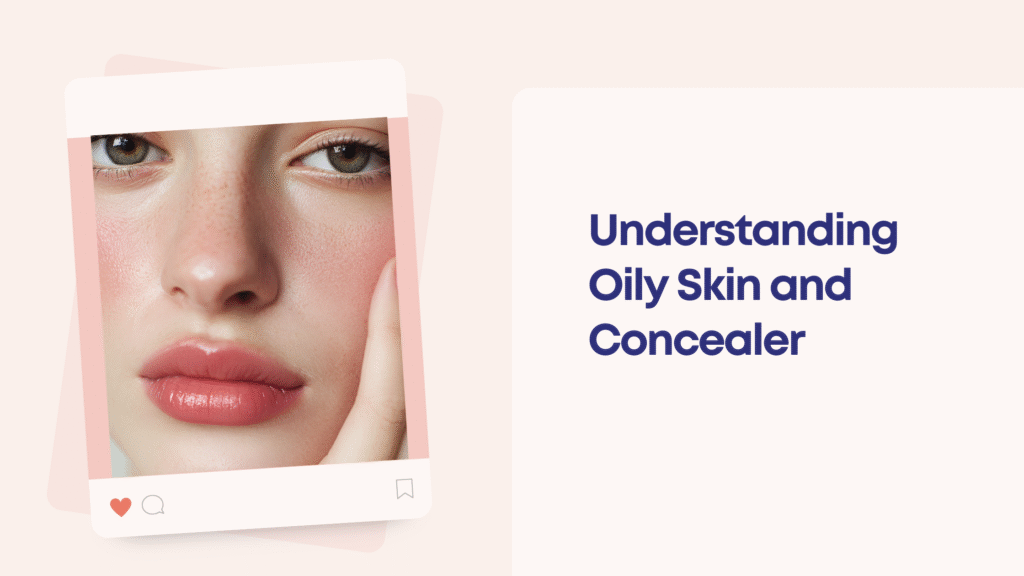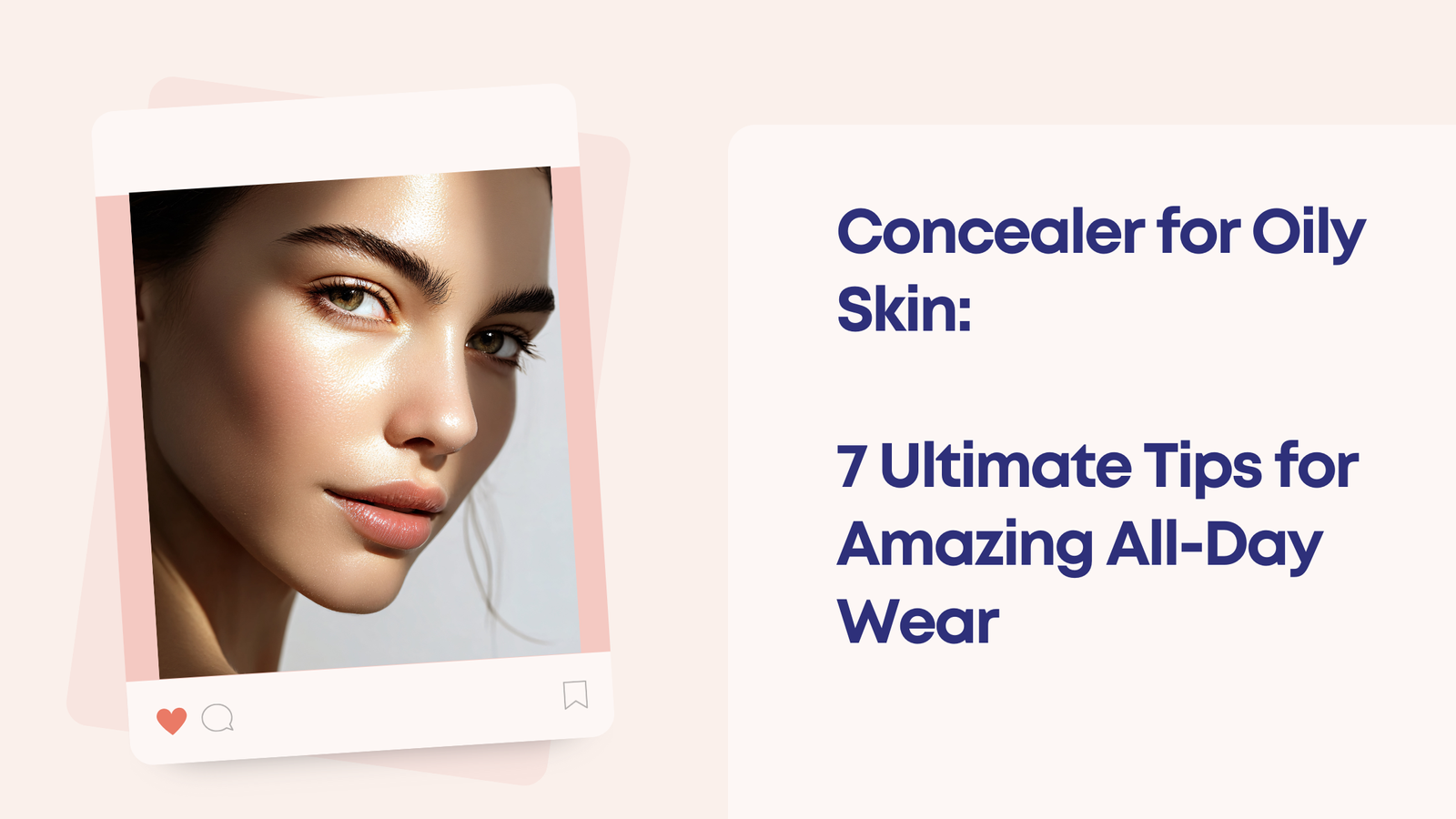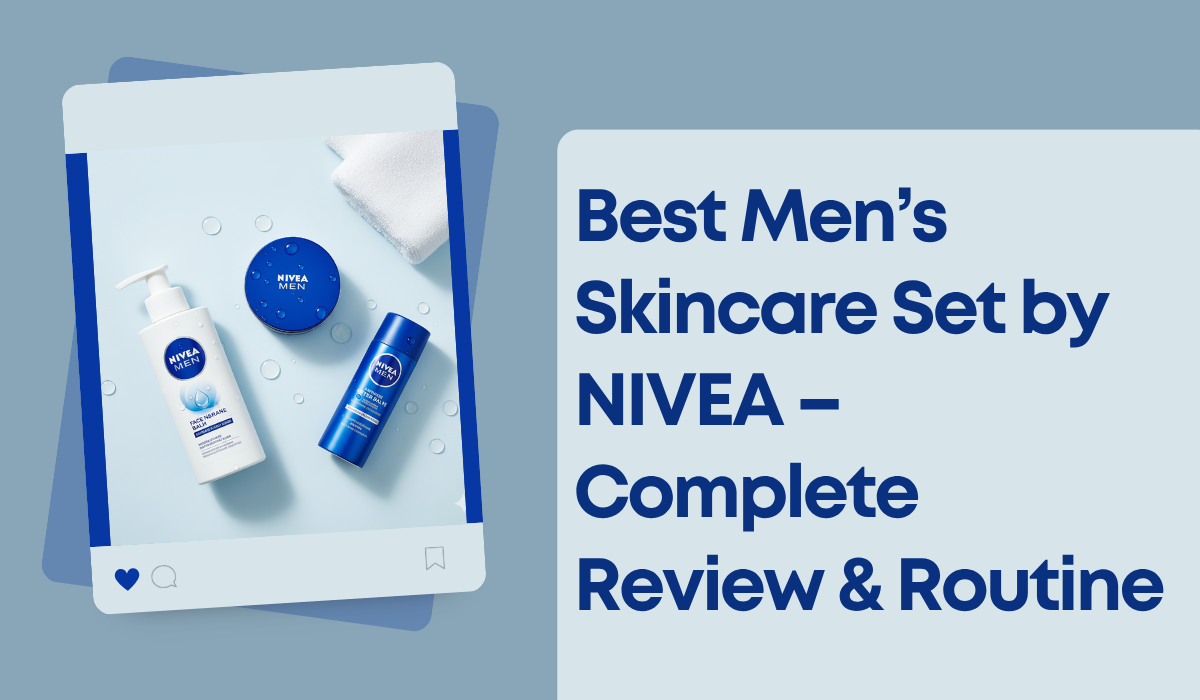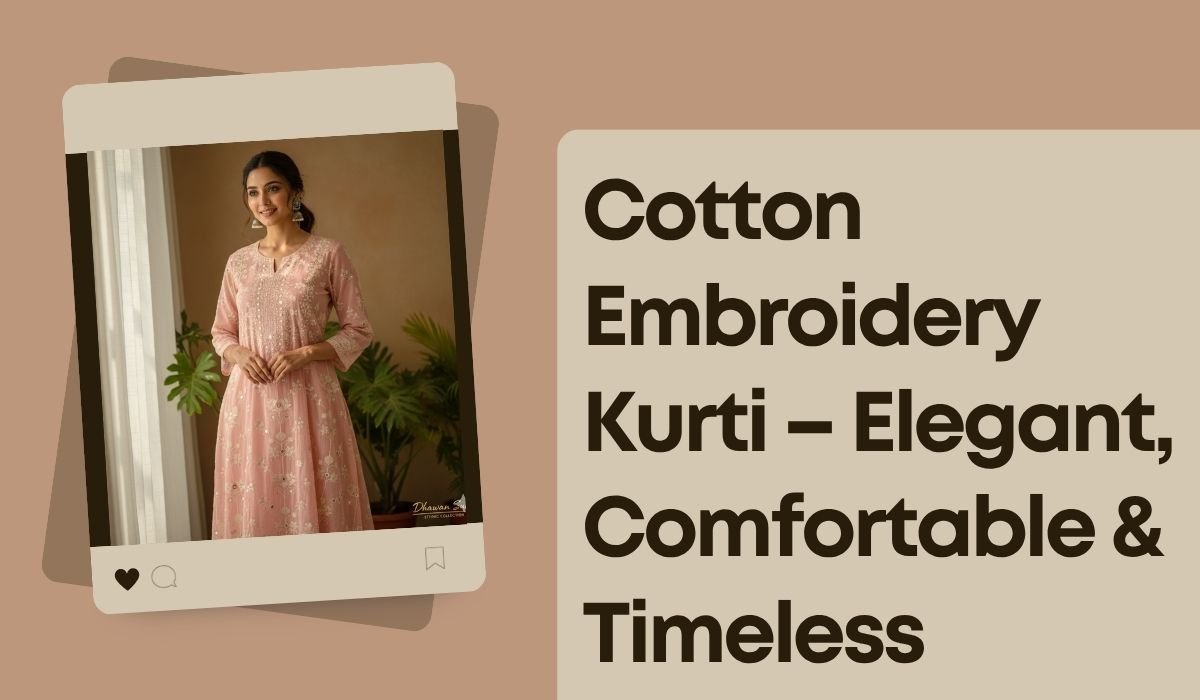Concealer for oily skin is a common challenge for makeup lovers, but celebrity makeup artist secrets can make it last all day. In this guide inspired by Tanvi Chemburkar, we break down the formula, finish, and technique that keep concealers matte, crease-free, and perfectly placed just like a pro on camera.
From primer to powder, every step matters when you want lasting coverage without the shine. Read on to learn how to transform a routine concealer into a long-wearing essential for any skin type that battles oil production.
Understanding Oily Skin and Concealer: Why It Budges?

Oily skin produces sebum that can break down makeup and cause oils to pool around fine lines and under-eye areas. The key is not fighting the oil so much as working with it: choosing a formula that adheres without slipping, and a technique that builds coverage in thin, controlled layers. When you hear the term Concealer for oily skin, you should think mattifying, long-wearing, and crease-resistant as non-negotiables. The right base and the right application can make all the difference between a product that vanishes by noon and one that stays put through a long day.
Celebrity makeup artist Tanvi Chemburkar emphasizes the importance of prepping the skin and selecting a concealer with a proven staying power. Her approach starts with understanding the skin’s texture, then selecting a formula that provides coverage without caking. A matte finish is essential for oily skin because it minimizes light reflection that can draw attention to flaws, while also resisting the natural sheen that oils create as the day wears on.
The Celebrity Artist Approach: Key Principles
Across many makeup artist manuals, several core principles recur when concealers must hold up under oily conditions. The following principles are practical, repeatable, and rooted in real-world results—exactly what you’d expect from a pro routine used on celebrities and red carpets. By adopting these principles, you can elevate any concealer to a long-wearing status.
- Oil-control first, then coverage. A mattifying primer or a lightweight oil-control base creates a surface that respects makeup longevity more than applying concealer directly onto slick skin.
- Thinnest possible layers. Build coverage in feather-light layers rather than a single heavy coat. This reduces cakiness and ensures a more durable finish.
- Shade matching and color correction. Neutralize darkness or redness with precise, targeted corrections before adding coverage.
- Set strategically. A translucent powder in a small area, not a blanket dusting, preserves moisture balance and prevents the product from sliding.
These principles, when applied consistently, help Concealer for oily skin achieve a true long-wear finish. The goal is not to hide every trace of oil but to create a balanced base where the concealer acts as a second skin—matte, crease-free, and present all day.
Formula Matters: Choosing the Right Concealer for Oily Skin
The formula you choose is the backbone of a lasting finish. For oily skin, you want a matte or demi-matte texture with good adhesion. Look for hydrophobic or silicone-rich formulas that resist splitting and slipping as you move. A common strategy is to pick a concealer with dimethicone or similar silicones in the base, which creates a barrier against oil and helps the product sit firmly in place.
Key indicators of a great concealer for oily skin include long-wear claims, oil-control ingredients, and a finish that remains matte without drying out the skin. If you’re unsure about shade or undertone, test in natural light and compare with your jawline to ensure it blends seamlessly with your complexion. A shade that’s too light can highlight texture, while one that’s too dark can look heavy and unblended on oil-prone areas.
Tools of the Trade
Having the right tools is half the secret. A dense synthetic brush, a damp beauty sponge, or a flat concealer brush can all work, depending on your technique. The aim is to apply in precise, thin layers and blend carefully without dragging oil to the surface. Chemburkar herself often recommends a small stippling motion to press the product into the skin rather than sweeping it across, which can lift oil and cause patchiness.
Blotting papers and a clean powder puff are essential for mid-day touchups. If you’re wearing makeup for many hours, a quick blot and a light, targeted powder set will refresh the finish without piling product into lines. For those who struggle with creasing, a light dusting on the underside of the eye can help control excess shine that causes concealer to crease later in the day.
Skin Prep for Longevity
Prep is where longevity begins. Cleanse, exfoliate if needed, and apply a lightweight moisturizer suited to your skin type. A minimal amount of moisturizer below the eye area prevents dryness and ensures smoother blending. Follow with a mattifying primer in the areas you expect to crease, such as the under-eye and the inner corners of the face. The primer acts as a buffer between skin oils and makeup, creating a surface that helps Concealer for oily skin adhere and stay put.
If you have very dry patches, hydrate those spots first or patch them with a tiny amount of moisturizer. The goal is to create a uniform plane where makeup can sit without sinking into dry skin or sliding over slick zones. This balanced prep helps the concealer apply smoothly and wear longer, even on heat and humidity.
Step-by-Step Application to Maximize Longevity

This is where technique makes the biggest difference. Breaking the application into small, repeatable steps helps ensure a matte, crease-free finish that endures from morning to night. Remember to keep each layer light and build where necessary.
- Prime and patch: Apply a thin layer of mattifying primer where you anticipate oil and creasing. Let it settle for a moment before you begin applying concealer.
- Color-correct only where needed: If you have noticeable dark circles, use a peach or pink-toned corrector sparingly. Compact correction in the inner corner to the outer edge of the under-eye helps neutralize tone without adding bulk.
- Spot-apply in thin layers: Use a small amount of Concealer for oily skin to cover only the areas that need it. Pat rather than wipe to avoid moving oils around.
- Blend with precision: Use a damp sponge or a concealer brush to blend the edges into the surrounding skin. The goal is seamless integration, not a visible line of demarcation under bright light.
- Layer, don’t cake: If you need more coverage, apply a second ultra-thin layer in the same zones rather than stacking a thick layer all at once.
- Set strategically: Dust a light veil of translucent powder only on the concealed areas. Focus on the under-eye and any area that tends to crease, while avoiding over-powdering the rest of the face.
- Final checks: Look for any sheen under natural light. If you see shine around the nose or forehead, a quick blot and touch-up with powder keeps the look fresh without altering color.
By following these steps, Concealer for oily skin becomes a reliable ally rather than a daily struggle. The technique emphasizes controlled application and smart setting, which together deliver all-day wear that still looks natural and breathable.
Color Correction and Coverage Strategy
Color correction is not about changing your skin tone; it’s about balancing undertones and neutralizing shadows that can make concealer look gray or ashy. For the under-eye area, a subtle peach or salmon correction can counteract blue undertones, while green correctors tame redness on the cheeks or around the nose. Apply corrections sparingly and only to the targeted areas, then settle with a thin layer of concealer that matches your skin tone. When you combine precise correction with a weightless concealer for oily skin, you’ll see a brighter, more awake appearance that lasts longer without looking heavy.
In practice, you’ll find that less is more. The most credible long-wear finish comes from a balanced approach: correct, conceal, set, and then re-check your makeup in natural light. If you’re unsure about shade matching, test on your jawline in daylight and observe how it blends with your neck and chest. A cohesive blend across the face is a big factor in a long-lasting, natural finish.
Layering and Setting Techniques
Layering is the concept behind durable coverage. Instead of piling a single thick coat, apply several micro-layers and let each layer dry or set slightly before adding the next. This reduces bloat and helps the product adhere more firmly to the skin. When you layer properly, you’ll notice less caking and more longevity, particularly for Concealer for oily skin in the delicate under-eye area.
The setting step is equally crucial. A translucent powder pressed gently over the concealed zones keeps oils in check and prevents the concealer from migrating into fine lines. If you have an extremely oily T-zone, consider a light application of powder there only after you’ve completed all other steps. A well-timed powder also gives your makeup a soft-focus effect, making texture appear minimized and pores less visible.
Finishing Touches and Crease Prevention
Creases usually form where the skin moves and oils accumulate. To prevent this, avoid applying too much product in the deepest lines. Instead, tap and blend to encourage the product to sit in place. An occasional light mist of setting spray can refresh the look without breaking the matte finish. For those with very oily skin, switching to a longer-wear setting spray can extend the life of the concealer, while still preserving a natural appearance.
Incorporating these practices into your routine dramatically improves the performance of Concealer for oily skin, helping you maintain a flawless complexion from morning meetings to evening events. The combination of the right formula, precise technique, and careful powder use is what separates a good concealer from a reliable long-wear solution.
Troubleshooting Common Issues

Even with the best strategies, you might encounter challenges. Here are common issues and quick fixes that align with the pro approach described by Tanvi Chemburkar.
- Creasing under the eyes in humid weather: Revisit the amount of product—apply slightly less and add another ultra-thin layer if needed. Use a setting spray after powder to help lock the finish.
- Fading around the nose or on the cheeks: Consider a mid-day refresh by blotting oil, applying a small amount of concealer only to the faded area, and re-powdering lightly.
- Dry patches showing through : Hydrate the skin before application and use a silicone-based concealer that adheres to the skin’s surface without emphasizing dryness.
- Concealer looking gray or ashy: Check the shade and undertone; opt for a warmer undertone if your skin leans golden or olive. Blend well into the surrounding skin for a seamless transition.
These troubleshooting steps, paired with the foundational steps above, ensure that Concealer for oily skin stays put, crease-free, and true to tone throughout the day.
Product Recommendations and Internal Resources
Choosing products that complement Concealer for oily skin is a holistic process. Focus on a compatible primer, the right concealer, and a suitable setting powder for your skin type. If you want deeper dives into shade matching, finish preferences, and technique tutorials, see related posts and resources. For a broader sense of how professionals build a long-wearing base, you can explore content about primer and powder combinations that work well with matte concealers.
Frequently Asked Questions
What makes Concealer for oily skin last longer than regular concealers?
Longevity comes from a combination of a matte or demi-matte formula, a proper primer, thin layering, and precise setting. Oils are controlled, not blocked, and the product adheres to the face rather than sliding around. A pro approach often includes a light mist of setting spray after powder to seal the look.
How can I prevent concealer from creasing under heavy lighting?
Build coverage in small layers rather than one thick application. Use a damp sponge to blend edges, set with a translucent powder, and avoid overloading the under-eye area. A well-mitted shade matched with your undertone reduces contrast lines that can catch light and reveal creases.
Should I use color correction for everyday wear?
Only if you have noticeable discoloration that affects how the concealer blends. Light correction in a targeted area can neutralize undertones, but keep the correction product thin and minimal. For most days, a concealer that matches your skin tone is enough for a clean, long-lasting finish.
How do I refresh my makeup mid-day without losing coverage?
Blot excess oil with a clean sheet, re-apply a thin layer of concealer to the needed zones, and lightly powder again. If possible, use a setting spray after the touch-up to re-lock the finish and minimize the chance of caking.
Conclusion
Achieving a flawless Concealer for oily skin that lasts all day is less about chasing a miracle product and more about a disciplined routine that harmonizes formula, prep, and technique. By following the expert tips inspired by Tanvi Chemburkar—prioritizing oil-control, layering, precise color correction, and careful setting—you can transform a standard concealer into a true long-wear solution. With the right tools and a few pro tricks, your complexion stays matte, your coverage stays intact, and your confidence stays high from sunup to sundown.












